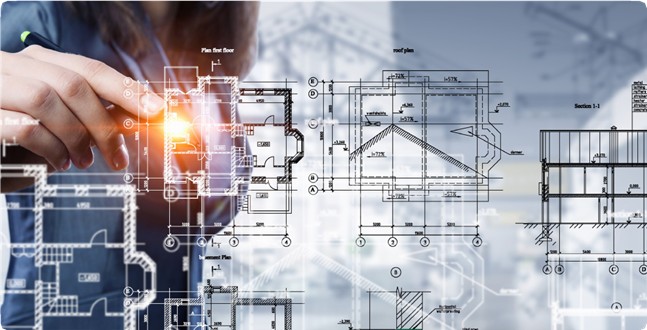Technology is continuously evolving and citizens are embracing it at a much faster pace. Government agencies striving with legacy systems need to address the elephant in the room and adopt digital now or the result would be an unsatisfied citizenry.
So, how do you say a government is digital or not? For starters, digital is not just offering services to citizens online. It goes beyond and takes much more. According to a Gartner report, “Digital government is government designed and operated to take advantage of digital data in optimizing, transforming, and creating government services.”1 To be ‘truly’ digital, it needs to reflect in your systems and processes. The below questions should give you some food for thought:
- Can citizens participate in your processes?
- Are your processes scalable to evolving citizens’ needs?
- Can your systems be integrated to deliver better services?
Need for an Enterprise Architecture
The e-government initiatives are a roadmap for better accountability and faster service delivery. For governments to transform their citizen service models and digitally extend their reach, interoperability is the key. This creates a need for a robust Enterprise Architecture (EA) at State level, allowing for better communication, enhanced collaboration and strong service commitment.
| Enterprise Architecture Simply put, an Enterprise Architecture (EA) is an underlined blueprint, leveraging your existing IT capabilities for your current and future organizational needs to help you realize your business vision. |
Leveraging a comprehensive framework, agencies can create a roadmap for aligning their missions with their IT support, further, streamlining processes, information technology and people with their overall organizational strategy. EA offers a host of benefits such as:
- Consolidated IT infrastructure – Eliminate information silos across departments/agencies with a unified architecture, leveraging and aligning your existing IT software and hardware to achieve agency’s mission
- Interoperability –To ensure seamless and faster service delivery, it is imperative that an organization has extensive collaboration capabilities. EA allows you to inter-operate across different departments/agencies, ensuring smooth and secure information flow
- Enhanced service delivery – Ensure citizen satisfaction with an improved service model. Deliver services to citizens through their preferred channels, leveraging extensive integration capabilities and scalable architecture
- Reduced redundancy – Gain operational efficiencies by reducing redundancies and manual hand-offs with 360-degree process visibility, ensuring similar or same requests are not processed every time
Blueprint for a Digital Government Enterprise Architecture
The business architecture of a Government agency is a combination of multiple interactions across stakeholders such as- Government and Citizens (G2C and C2G), Government and Businesses (G2B and B2G), Government and its Employees (G2E and E2G) and internal Government interactions (G2G).
For government agencies to become truly digital, the enterprise architecture should allow for:
- Contextual Government to Citizen interactions
- Accountable Government to Business transactions
- Collaborative Government to Government exchanges
- Seamless Government to Employee communications
Introducing a blueprint that integrates business processes across the Government business architecture and serves as a strong foundation for ‘digital governance’ across state agencies.
The architecture leverages a Business Process Management (BPM) platform in tandem with an Enterprise Content Management (ECM) and seamlessly integrates with the core/ legacy applications and systems. The architecture streamlines key Government-to-Government administrative services by automating workflows such as File/DAK management, Note management, Parliament
query management, Grievance management, and others. This addresses agencies’ pain point of long processing time and offers an accountable, paperless, and efficient work environment.
With a view to extend the reach and deliver common services to citizens across nation, this architecture proposes of setting up a Data Centre (DC). The data center aims to transform and streamline processes across multiple departments (Agriculture, Animal Husbandry, Education, Social Welfare, etc.) of a particular state/agency.
To understand how the architecture works, consider a scenario where the agriculture department applies for a grant to the Grants department. With the data center in place, the grant would auto-route to the concerned official in the grants department, allowing the member to access all the relevant records across departments as defined in the workflows. This shortens the review and approval time in the grant’s lifecycle and helps in faster project closeout. The data center aims to promote collaboration across various departments in states/ agencies, thereby, increasing productivity.
| The key building blocks of an effective Enterprise Architecture: Integration with multi-channels for anytime- anywhere request capture
Defined workflows, leveraging intelligent Business Process Management Robust Enterprise Content Management System Common application for office administration Core ERP Applications Middleware Applications |
This common application infrastructure at the state level would ensure 24/7 service delivery. It helps extend government’s reach to citizens as citizens can now access services through kiosks, internet portals, common government centers, government offices (such as Municipal offices, etc.) and affiliated offices (such as Post services).
Setting the Right Foundation

With a robust Enterprise Architecture in place, agencies can realize a truly digital government and ensure better service delivery. The key is to consolidate your existing IT infrastructure and eliminate process silos. And, choosing the right BPM and ECM platform as your architecture’s foundation would help design a scalable architecture, addressing your current needs and considering future requirements. With strong BPM software and ECM software capabilities achieve a configurable unified platform across State departments, and ensure citizen-centric governance.
You might be interested in



25 Sep, 2025
Transforming Enterprises with Newgen’s Business Process Management Software

